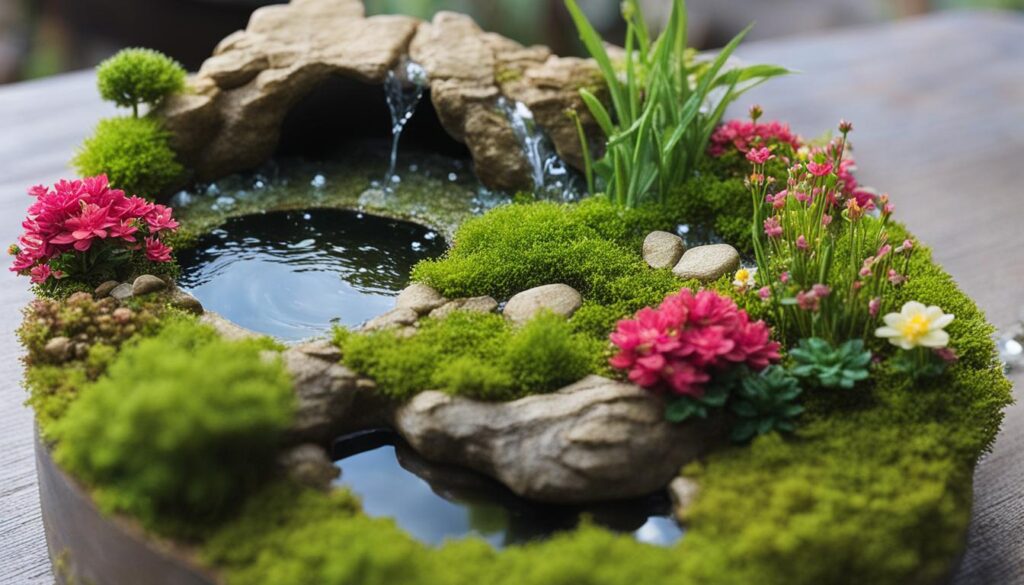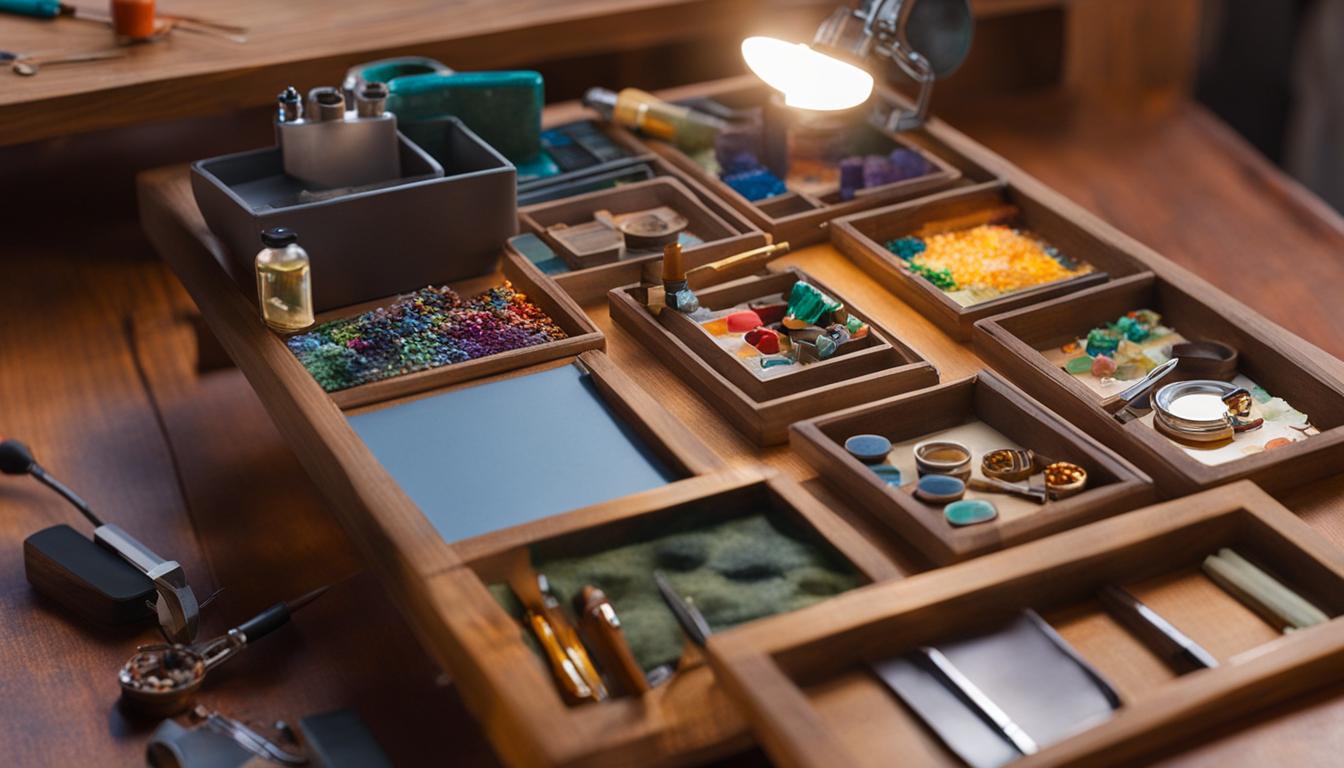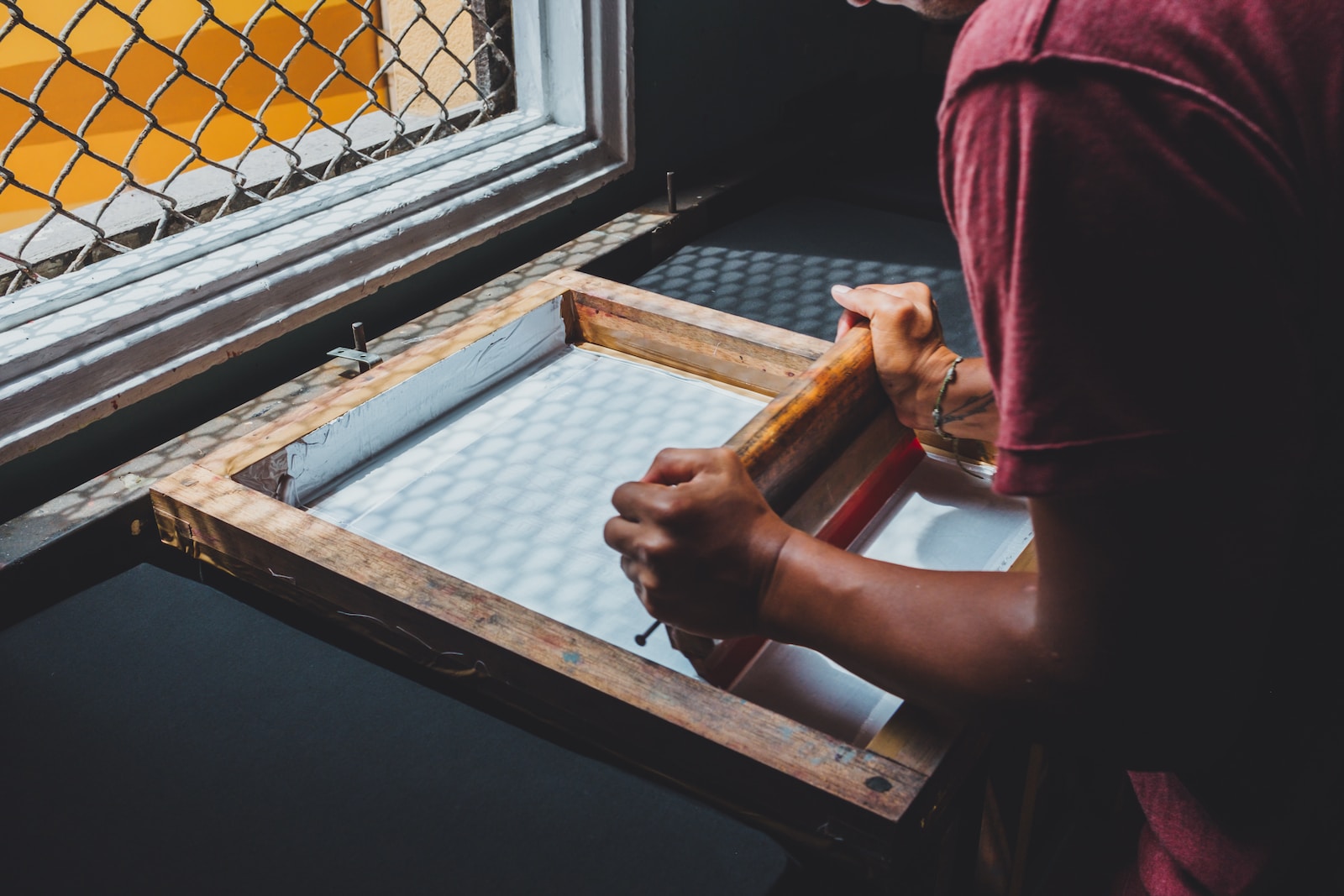Resin and polymer clay are two popular materials used for miniature crafting. In this article, we will compare the properties and benefits of each material, helping you make an informed decision for your miniature crafting projects. Whether you prefer the versatility of resin or the ease of use of polymer clay, we’ll explore their unique features and provide tips for working with both materials.
Key Takeaways:
- Resin and polymer clay are both popular choices for miniature crafting.
- Resin offers versatility, durability, and is ideal for creating clear or translucent elements.
- Polymer clay is user-friendly, flexible, and lightweight, making it great for intricate details.
- Consider your project requirements and personal preferences when choosing between resin and polymer clay.
- Follow safety precautions and use the correct techniques when working with both materials.
Understanding Resin: A Versatile Option for Miniature Crafting
Resin is a popular choice for miniature crafting due to its versatility and wide range of possibilities. It is a liquid material that hardens into a solid form when cured, making it ideal for creating various elements in your miniatures. Whether you want to make clear or translucent items like water, glass, or gems, resin can provide the desired effect.
Resin offers transparency and the ability to mimic the look of real glass or water, adding a realistic touch to your miniatures. Its durability ensures that your creations can withstand handling and impacts, making them long-lasting and sturdy.
When working with resin, it is important to follow safety precautions and work in a well-ventilated area. Resin can emit fumes during the curing process, so proper ventilation is necessary. Additionally, using silicone molds or creating a barrier can help contain the resin and prevent leakage.
Overall, resin offers a high level of durability and versatility, allowing you to create stunning and realistic miniatures. Its ability to mimic transparent elements and its durability make it a popular choice among miniature crafters.

Tips for Working with Resin
Here are some tips to consider when working with resin in your miniature crafting projects:
- Ensure proper ventilation by working in a well-ventilated area or using a fume extractor.
- Use silicone molds or create a barrier to contain the resin and prevent leakage.
- Follow the manufacturer’s instructions for mixing the resin and curing times.
- Avoid introducing air bubbles by slowly pouring the resin and using a heat gun or torch to remove any bubbles that may form.
- Consider wearing protective gloves to avoid skin contact with the resin.
Resin vs. Polymer Clay Comparison
Before deciding which material to use for your miniature crafting projects, it’s important to understand the differences between resin and polymer clay:
| Resin | Polymer Clay |
|---|---|
| Versatile and transparent. | Comes in a wide range of colors. |
| Durable and long-lasting. | Can be hardened by baking in an oven. |
| Required safety precautions due to fumes. | Safe to use without emitting any harmful fumes. |
| Ideal for clear or translucent elements. | Easy to shape and sculpt. |
Consider the specific requirements of your project and your personal preferences when choosing between resin and polymer clay. Both materials offer unique benefits, and experimenting with both can help you determine which is the best fit for your creative endeavors.
Exploring Polymer Clay: User-Friendly and Flexible
Polymer clay is a popular choice for miniature crafting due to its user-friendly nature and flexibility. This versatile material offers a range of advantages that make it ideal for creating intricate and detailed miniatures.
One of the key advantages of polymer clay is its ease of use. It is soft and pliable, allowing for easy shaping and sculpting. Whether you’re creating tiny figurines or intricate jewelry pieces, polymer clay provides the flexibility needed to bring your vision to life.
Additionally, polymer clay comes in a wide range of colors, making it easy to achieve the desired hues for your miniatures. You can also mix different colors to create custom shades, giving you even more creative possibilities.
Another notable feature of polymer clay is its lightweight nature. This makes it particularly suitable for creating delicate or intricate miniatures, as it won’t add excessive weight to your finished pieces. Whether you’re crafting miniatures for a dollhouse or creating unique jewelry items, polymer clay offers the dexterity and lightweight quality necessary for your projects.
You Might Also Like:
- Tips for achieving smooth finishes with polymer clay
- Exploring advanced techniques for polymer clay miniatures
- Using polymer clay in mixed media projects
In conclusion, polymer clay is a user-friendly and flexible material that offers numerous advantages for miniature crafting. Its ease of use, wide color range, and lightweight nature make it a popular choice among crafters. Whether you’re a beginner or an experienced artist, polymer clay provides the versatility needed to bring your miniature creations to life.
| Advantages of Polymer Clay for Miniature Crafting | Resin vs. Polymer Clay Comparison |
|---|---|
| Soft and pliable for easy shaping and sculpting | Resin offers versatility for creating clear or translucent elements |
| Wide range of colors for customizing miniatures | Polymer clay is lightweight, ideal for delicate miniatures |
| Lightweight for creating intricate and delicate miniatures | Polymer clay can be baked for durability |
“Polymer clay offers the flexibility and dexterity needed for intricate miniature crafting.” – Miniature Crafters Magazine
Comparing Resin and Polymer Clay: Which is Right for You?
When it comes to choosing between resin and polymer clay for your miniature crafting projects, there are several key factors to consider. Both materials have their unique properties and benefits, so it’s important to evaluate your specific needs and preferences before making a decision.
Resin offers a high level of versatility and durability, making it suitable for creating clear or translucent elements such as water, glass, or gems. It can also withstand handling and impacts, ensuring that your miniatures will last for a long time. On the other hand, polymer clay is known for its user-friendly nature and flexibility. It is soft and easy to shape and sculpt, making it ideal for creating intricate and delicate miniatures.
To determine which material is right for you, consider the specific requirements of your project. If you need clear or translucent elements or if durability is a priority, resin may be the better choice. However, if ease of use and flexibility are more important, polymer clay may be the way to go. It’s also worth experimenting with both materials to see which one you feel more comfortable working with and which one best suits your creative style.
Tips for Working with Resin and Polymer Clay in Miniature Crafting
Working with resin and polymer clay can be a rewarding experience for miniature crafting enthusiasts. However, each material requires specific techniques and considerations to ensure successful results. Whether you choose resin or polymer clay for your projects, here are some helpful tips to keep in mind:
Working with Resin:
1. Safety first: Resin can emit fumes during the curing process, so it’s important to work in a well-ventilated area. Wear gloves and protective eyewear to avoid direct contact with the material.
2. Containment is key: Use silicone molds or create a barrier with tape or clay to contain the resin and prevent leakage. This will help you achieve clean and precise shapes.
3. Mixing and pouring: Follow the manufacturer’s instructions for mixing the resin and catalyst in the correct ratio. Pour the resin slowly and evenly into the molds, avoiding air bubbles as much as possible.
Working with Polymer Clay:
1. Baking temperature and time: Polymer clay must be baked at the correct temperature and for the recommended time to achieve optimal hardness. Use an oven thermometer to ensure accurate temperature control.
2. Tools and textures: Experiment with different tools, such as sculpting tools, silicone molds, or even household objects, to shape and texture your polymer clay creations. Get creative and try out various techniques to achieve unique effects.
3. Conditioning and blending: Soften the clay by conditioning it before working with it. Knead and roll it in your hands to warm it up and make it pliable. Mix different colors together to create custom shades and gradients.
By following these tips, you’ll be able to work with resin and polymer clay effectively and bring your miniature crafting projects to life. Remember to experiment and have fun with both materials to discover your own unique style and techniques.
Table: Comparison of Resin and Polymer Clay Techniques
| Techniques | Resin | Polymer Clay |
|---|---|---|
| Sculpting | Requires molds and careful pouring | Allows for intricate shaping and sculpting by hand |
| Translucent Effects | Creates clear or translucent elements like water or glass | Can achieve a limited translucent effect, but not as clear as resin |
| Durability | High level of durability, can withstand handling and impacts | Less durable, may be prone to breakage if not handled carefully |
| Color Options | Can be transparent or colored, wide range of pigments available | Comes in a variety of pre-colored options, can be mixed to create custom shades |
| Curing Process | Requires curing time to harden the material | Needs to be baked in an oven to reach optimal hardness |
Conclusion: Choosing the Right Material for Your Miniature Crafting Projects
As you explore the world of miniature crafting, the choice between resin and polymer clay can seem daunting. Both materials have their unique qualities that make them suitable for different types of projects. Resin offers versatility and the ability to create transparent or translucent elements with excellent durability. On the other hand, polymer clay is user-friendly, flexible, and lightweight, making it a great option for intricate and delicate miniatures.
To determine the best medium for your miniature crafting projects, consider the specific needs of your creations. If you’re looking to create realistic water, glass, or gem effects, resin may be the ideal choice. Its ability to withstand handling and impacts also makes it a great option for long-lasting miniatures. Alternatively, if you prefer a material that is easy to shape, sculpt, and mix colors, polymer clay can offer you the flexibility and simplicity you need.
Experimentation is key when it comes to finding the perfect material for your projects. Don’t be afraid to try both resin and polymer clay to see which one aligns better with your creative vision. Remember to follow the safety precautions and techniques mentioned in this article, ensuring a smooth and enjoyable crafting experience. Whether you choose resin or polymer clay, your miniature crafting journey is sure to be filled with endless possibilities and artistic fulfillment.
FAQ
What is resin and polymer clay?
Resin is a liquid material that hardens into a solid form when cured, while polymer clay is a type of modeling clay that can be hardened by baking it in an oven.
What are the benefits of using resin for miniature crafting?
Resin offers versatility, durability, and the ability to create clear or translucent elements. It is also ideal for long-lasting miniatures.
What are the advantages of using polymer clay for miniature crafting?
Polymer clay is user-friendly, flexible, and lightweight. It is easy to shape and sculpt, making it suitable for intricate and delicate miniatures.
How do I choose between resin and polymer clay for miniature crafting?
Consider the specific requirements of your project and your personal preferences. Resin is best for clear or translucent elements and long-lasting miniatures, while polymer clay is ideal for ease of use and flexibility.
What are some tips for working with resin and polymer clay in miniature crafting?
When working with resin, follow safety precautions and work in a well-ventilated area. Use silicone molds or create a barrier to contain the resin. For polymer clay, bake it at the correct temperature and time. Use sculpting tools and molds to shape and texture both materials.
 Skip to main content
Skip to main content


